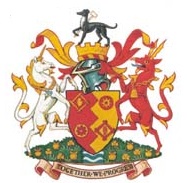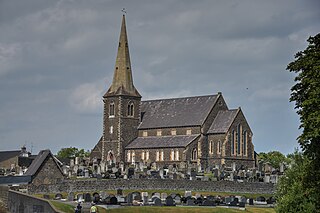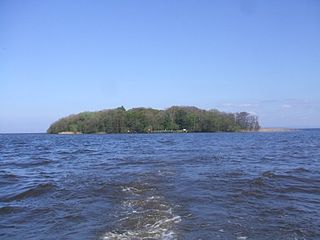
The Loyalist Volunteer Force (LVF) was an Ulster loyalist paramilitary group in Northern Ireland. It was formed by Billy Wright in 1996 when he and his unit split from the Ulster Volunteer Force (UVF) after breaking its ceasefire. Most of its members came from the UVF's Mid-Ulster Brigade, which Wright had commanded. In a two-year period from August 1996, the LVF waged a paramilitary campaign in opposition to Irish republicanism and the Northern Ireland peace process. During this time it killed at least 14 people in gun and bomb attacks, almost all of them Catholic civilians killed at random. The LVF called off its campaign in August 1998 and decommissioned some of its weapons, but in the early 2000s a loyalist feud led to several killings. Since then, the LVF has been largely inactive, but its members are believed to have been involved in rioting and organized crime. In 2015, the security forces stated that the LVF "exists only as a criminal group" in Mid-Ulster and Antrim.
William Stephen Wright, known as King Rat, was a Northern Irish loyalist paramilitary leader who founded the Loyalist Volunteer Force (LVF) during The Troubles. Wright had joined the Ulster Volunteer Force (UVF) in his home town of Portadown around 1975. After spending several years in prison, he became a Protestant fundamentalist preacher. Wright resumed his UVF activities around 1986 and, in the early 1990s, replaced Robin Jackson as commander of that organisation's Mid-Ulster Brigade. According to the Royal Ulster Constabulary (RUC), Wright was involved in the sectarian killings of up to 20 Catholics but was never convicted for any.

County Armagh is one of the six counties of Northern Ireland and one of the traditional thirty-two counties of Ireland. It is located in the province of Ulster and adjoins the southern shore of Lough Neagh. It borders the Northern Irish counties of Tyrone to the west and Down to the east. The county borders Louth and Monaghan to the south and southwest, which are in the Republic of Ireland. It is named after its county town, Armagh, which derives from the Irish Ard Mhacha, meaning "Macha's height". Macha was a sovereignty goddess in Irish mythology and is said to have been buried on a wooded hill around which the town of Armagh grew. County Armagh is colloquially known as the "Orchard County" because of its many apple orchards.
Lurgan is a town in County Armagh, Northern Ireland, near the southern shore of Lough Neagh. Lurgan is about 18 miles (29 km) south-west of Belfast and is linked to the city by both the M1 motorway and the Belfast–Dublin railway line. It had a population of about 28,634 at the 2021 UK census and is within the Armagh, Banbridge and Craigavon district. For some purposes, Lurgan is treated as part of the "Craigavon Urban Area" along with neighbouring Craigavon and Portadown.

Portadown is a town in County Armagh, Northern Ireland. The town sits on the River Bann in the north of the county, about 24 mi (39 km) southwest of Belfast. It is in the Armagh City, Banbridge and Craigavon Borough Council area and had a population of about 22,000 at the 2011 Census. For some purposes, Portadown is treated as part of the "Craigavon Urban Area", alongside Craigavon and Lurgan.

Lough Neagh is a freshwater lake in Northern Ireland and is the largest lake on the island of Ireland and in the United Kingdom. It has a surface area of 151 square miles and is about 19 miles (31 km) long and 9 miles (14 km) wide. According to Northern Ireland Water, it supplies 40.7% of Northern Ireland's drinking water. Its main inflows are the Upper River Bann and Blackwater, and its main outflow is the Lower Bann. There are several small islands, including Ram's Island, Coney Island and Derrywarragh Island. The lake bed is owned by the 12th Earl of Shaftesbury and the lake is managed by Lough Neagh Partnership. Its name comes from Irish Loch nEachach, meaning "Eachaidh's lake".

The River Bann is the longest river in Northern Ireland, its length, Upper and Lower Bann combined, being 129 km (80 mi). However, the total length of the River Bann, including its path through the 30 km (19 mi) long Lough Neagh is 159 km (99 mi). Another length of the River Bann given is 90 mi. The river winds its way from the southeast corner of Ulster to the northwest coast, pausing in the middle to widen into Lough Neagh. The River Bann catchment has an area of 5,775 km2. The River Bann has a mean discharge rate of 92 m3/s. According to C. Michael Hogan, the Bann River Valley is a settlement area for some of the first human arrivals in Ireland after the most recent glacial retreat.

Craigavon Borough Council was a local council in counties Armagh, Down and Antrim, in Northern Ireland. It merged with Armagh City and District Council and Banbridge District Council in May 2015 under local government reorganisation in Northern Ireland to become Armagh, Banbridge and Craigavon District Council.

Drumcree Parish Church, officially The Church of the Ascension, is the Church of Ireland parish church of Drumcree in County Armagh, Northern Ireland. It sits on a hill in the townland of Drumcree, outside Portadown. It is a site of historic significance and is a listed building.

Blackwatertown is a small village in County Armagh, Northern Ireland. It sits on the River Blackwater, in the townland of Lisbofin, at the border with County Tyrone. The village is around 8 kilometres (5 mi) north of Armagh city, and the villages of Benburb and Moy are nearby. Blackwatertown had a population of 376 in the 2011 Census. The River Blackwater enters Lough Neagh west of Derrywarragh Island and is navigable from Maghery to Blackwatertown.

The River Blackwater or Ulster Blackwater is a river mainly in County Armagh and County Tyrone, Northern Ireland. Its source is to the north of Fivemiletown, County Tyrone. The river divides County Armagh from County Tyrone and also divides County Tyrone from County Monaghan, making it part of the border between the United Kingdom and the Republic of Ireland.

William McCaughey was a member of the Royal Ulster Constabulary's Special Patrol Group and the illegal Ulster Volunteer Force's Glennane gang in the 1970s. He was imprisoned for 16 years for murder from 1980 to 1996. On his release he worked as a loyalist and Orange Order activist until his death in 2006.

The Provisional Irish Republican Army (IRA) carried out two bomb attacks against British coal ships in February 1981 and February 1982 at Lough Foyle, a large inlet between County Londonderry in Northern Ireland and County Donegal in the Republic of Ireland. The IRA used hijacked pilot boats to board the ships. Both vessels were sunk, but their crews reached the coastline safely in lifeboats.

Derrywarragh Island is a boulder clay island on Lough Neagh, Northern Ireland. It is linked by a bridge to Maghery, County Armagh. The island is approximately 13 kilometres (8 mi) northwest of Portadown. Most of the island is wet grassland. There are also areas of wet woodland, marshes and swamps. The island is also regularly the home of wintering and breeding birds.

The Drumcree conflict or Drumcree standoff is a dispute over yearly parades in the town of Portadown, Northern Ireland. The town is mainly Protestant and hosts numerous Protestant marches each summer, but has a significant Catholic minority. The Orange Order insists that it should be allowed to march its traditional route to and from Drumcree Church on the Sunday before the Twelfth of July. However, most of this route is through the mainly Catholic/Irish nationalist part of town. The residents, who see the march as sectarian, triumphalist and supremacist, have sought to ban it from their area. The Orangemen see this as an attack on their traditions; they had marched the route since 1807, when the area was mostly farmland.

Coney Island is an island in Lough Neagh, Northern Ireland. It is about 1 km offshore from Maghery in County Armagh, is thickly wooded and of nearly 9 acres (36,000 m2) in area. It lies between the mouths of the River Blackwater and the River Bann in the south-west corner of Lough Neagh. Boat trips to the island are available at weekends from Maghery Country Park or Kinnego Marina. The island is owned by the National Trust and managed on their behalf by Armagh City, Banbridge and Craigavon Borough Council. Coney Island Flat is a rocky outcrop adjacent to the island. Although Samuel Lewis called Coney Island the only island in County Armagh, Armagh's section of Lough Neagh also includes Croaghan Island, as well as the marginal cases of Padian and Derrywarragh Island.

From 6 to 11 July 1997 there were mass protests, fierce riots and gun battles in Irish nationalist districts of Northern Ireland. Irish nationalists/republicans, in some cases supported by the Provisional Irish Republican Army (IRA), attacked the Royal Ulster Constabulary (RUC) and British Army. The protests and violence were sparked by the decision to allow the Orange Order to march through a Catholic/nationalist neighbourhood of Portadown. Irish nationalists were outraged by the decision and by the RUC's aggressive treatment of those protesting against the march. There had been a bitter dispute over the march for many years.

The Mac Cana or MacCan were a Gaelic Irish clan who held lands in Clancann and Clanbrasil in what is now northern County Armagh, and had the title of 'Lords of Clanbrasil'. It is the origin of the surname McCann and Maccan.

The 1990 Lough Neagh ambush was a gun attack carried out by the Provisional IRA on 10 November 1990 at Castor Bay, near Morrows Point, Lough Neagh, County Armagh, Northern Ireland targeting members of the security forces involved in a waterfowl hunting trip with other two men at the time. An active service unit of the IRA's North Armagh Brigade shot dead a Royal Ulster Constabulary (RUC) Inspector, an RUC Reservist, a former Ulster Defence Regiment (UDR) soldier and one civilian. Some members of the wildfowling party struggled with their attackers, and one of the constables returned fire before being killed.
Colonel James Alfred Caulfeild, 7th Viscount Charlemont DL JP CB was an Irish Peer and soldier.




















